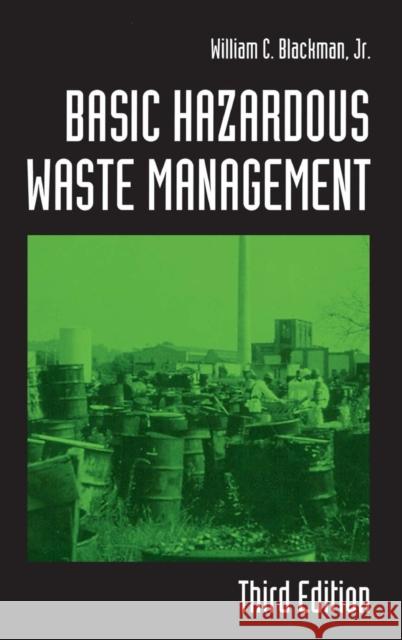Basic Hazardous Waste Management » książka
Basic Hazardous Waste Management
ISBN-13: 9781566705332 / Angielski / Twarda / 2001 / 488 str.
This third edition updates and expands the material presented in the best-selling first and second editions of Basic Hazardous Waste Management. It covers health and safety issues affecting hazardous waste workers, management and regulation of radioactive and biomedical/infectious wastes, as well as current trends in technologies. While the topics have been completely revised, the author employs the same practical approach that made the previous editions so popular. Chapters are structured to first outline the issue, subject, or technology, then to describe generic practice, and then to conclude with a summary of the statutory or regulatory approach.
Blackman introduces fundamental issues such as human health hazards; the environmental impacts of toxic, reactive, and ignitable materials; the mobility, pathways and fates of released hazardous materials; and the roles of science, technology, and risk assessment in the standards-setting process. He explores hazardous waste site remediation technology, and the application of federal statutes, regulations, programs, and policies to the cleanup of contaminated sites.
This text provides an introductory framework-which can serve as the foundation for a program of study in traditional as well as modern hazardous waste management-or a component of a related program. Its overview format provides numerous references to more detailed materials to assist the student or instructor in expansion on specific topics.
This third edition updates and expands the material presented in the best-selling first and second editions of Basic Hazardous Waste Management. It covers health and safety issues affecting hazardous waste workers, management and regulation of radioactive and biomedical/infectious wastes, as well as current trends in technologies. While the topics have been completely revised, the author employs the same practical approach that made the previous editions so popular. Chapters are structured to first outline the issue, subject, or technology, then to describe generic practice, and then to conclude with a summary of the statutory or regulatory approach.
Blackman introduces fundamental issues such as human health hazards; the environmental impacts of toxic, reactive, and ignitable materials; the mobility, pathways and fates of released hazardous materials; and the roles of science, technology, and risk assessment in the standards-setting process. He explores hazardous waste site remediation technology, and the application of federal statutes, regulations, programs, and policies to the cleanup of contaminated sites.
This text provides an introductory framework-which can serve as the foundation for a program of study in traditional as well as modern hazardous waste management-or a component of a related program. Its overview format provides numerous references to more detailed materials to assist the student or instructor in expansion on specific topics.











